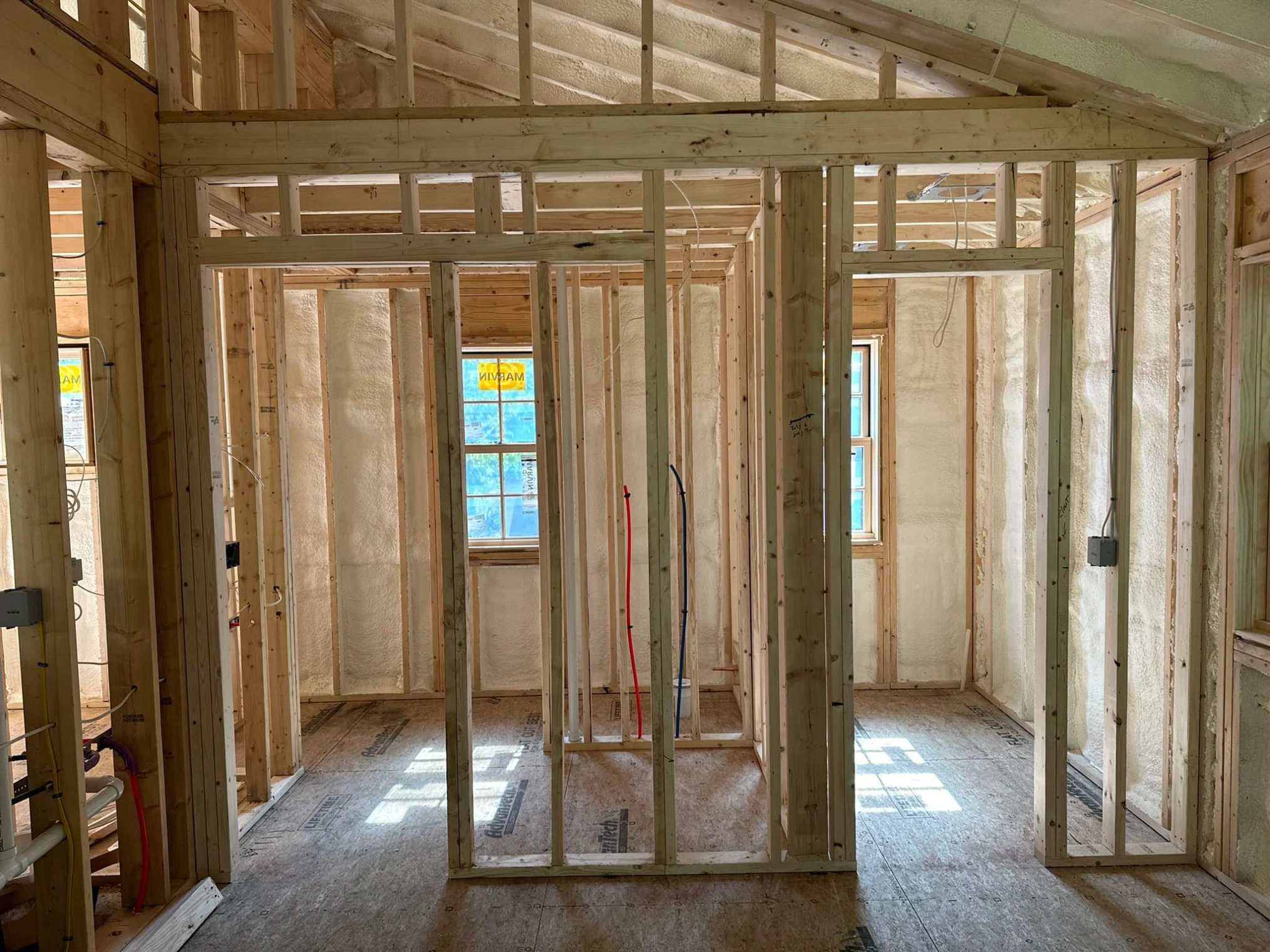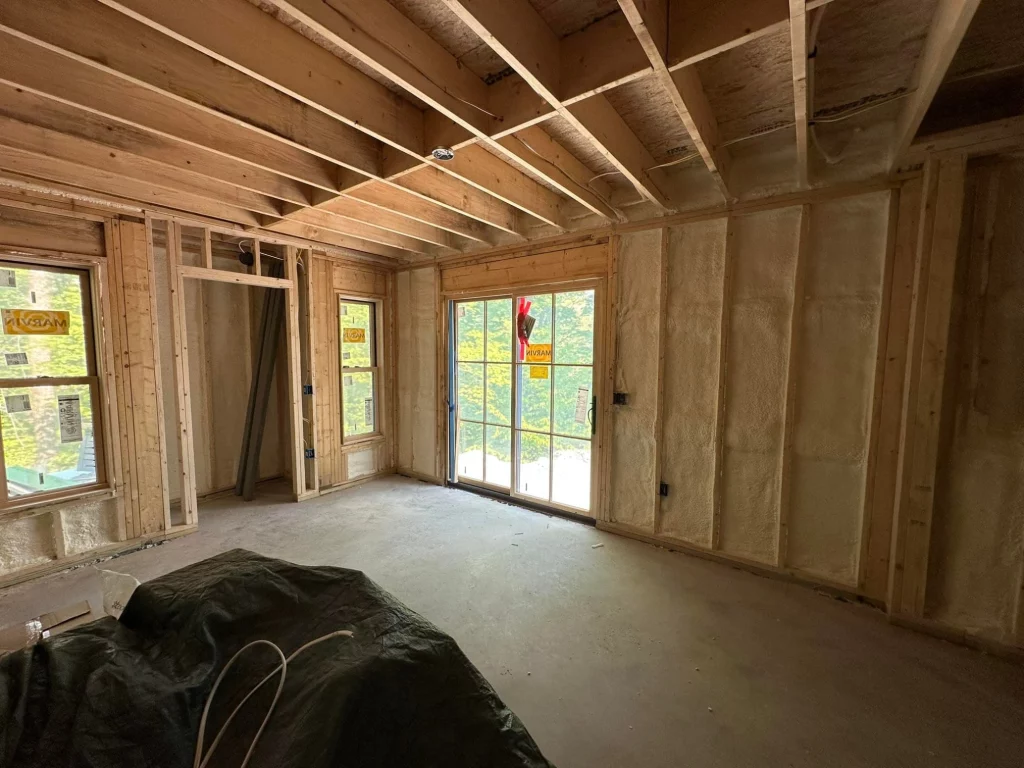
Insulation acts as a barrier that stops heat from escaping during Monson’s cold winters and keeps it out in summer. This direct action cuts down on the energy needed to heat and cool homes, which leads to lower utility bills. Homeowners in this area often see their heating costs drop by 15 to 25 percent after adding proper insulation, based on patterns from local installations.
To understand this better, this article breaks down how insulation helps manage those increasing energy expenses. It covers the basics, local factors, and key choices to make. Information here draws from years of hands-on work with insulation in Monson, MA properties, offering reliable guidance for residents facing higher bills.
Monson sits in Hampden County, where winters bring average lows around 15 degrees Fahrenheit. Heating accounts for over 60 percent of home energy use here. A report from the U.S. Energy Information Administration shows that Massachusetts households spent an average of $1,800 on heating last winter, up 10 percent from the year before due to rising natural gas prices.
This increase means families in Monson feel the pinch as bills climb higher. Electric rates also rose 8 percent in the region. Without changes, these trends continue to strain budgets. Insulation addresses this by reducing the demand on heating systems right away.
Insulation works by trapping air pockets that resist heat flow. Materials like fiberglass, cellulose, and foam fill walls, attics, and floors to create that resistance. The R-value measures how well it performs; higher numbers mean better protection against heat loss.
In practice, adding insulation to an attic in a Monson ranch-style home can stop warm air from rising out through the roof. This keeps indoor temperatures steady without constant furnace runs. Results show up in the first bill after installation, often with noticeable savings.
In addition to proper insulation installation services, check for air leaks around windows and doors first. Sealing them boosts insulation’s effect and prevents drafts common in older New England homes.
Different materials suit various parts of a house and budgets. Fiberglass batts fit between joists easily and cost less upfront. Blown-in cellulose uses recycled paper treated for fire resistance and works well in attics with irregular shapes.
Spray foam expands to fill gaps completely, ideal for rim joists in basements where cold air sneaks in. Each type offers specific R-values per inch, helping match needs to climate.
| Insulation Type | Typical R-Value per Inch | Best Use Areas | Approximate Cost per Sq Ft |
|---|---|---|---|
| Fiberglass Batts | 2.9 – 3.8 | Walls, Floors | $0.50 – $1.00 |
| Blown-in Cellulose | 3.1 – 3.8 | Attics, Walls | $0.60 – $1.20 |
| Spray Foam (Closed-Cell) | 6.0 – 7.0 | Basements, Rim Joists | $1.50 – $3.00 |
| Rigid Foam Boards | 3.8 – 5.0 | Exterior Walls | $0.80 – $1.50 |
This table helps compare options based on common insulation applications in Monson. Costs vary with material quality and installation method.
These savings apply across the insulation types listed above. Data from the Department of Energy indicates that proper insulation in zone 5 climates like Monson’s can save up to $200 annually on heating alone.
As noted earlier, prioritize the attic if the home is older; heat loss there accounts for 25 to 30 percent of total energy waste in uninsulated spaces.
Central Massachusetts features humid summers and harsh winters with freeze-thaw cycles. These conditions make homes prone to moisture buildup, which insulation must handle without trapping dampness. Vapor barriers paired with materials like fiberglass prevent mold in wall cavities.
Local codes require minimum R-38 in attics for new work, but many older homes fall short at R-19 or less. Upgrading meets these standards and improves comfort. Snow and ice dams form on poorly insulated roofs, leading to water damage that adds repair costs on top of energy bills.
Experience from area projects reveals that homes with balanced insulation inside and out handle these extremes better, reducing wear on HVAC systems over time.

Assess the home’s age and current setup. Older structures in Monson, built before 1980, often have minimal insulation. An energy audit identifies weak spots like uninsulated crawl spaces.
Think about long-term plans. If selling soon, focus on high-impact areas like the attic for quick returns. Budget for professional assessment to avoid uneven coverage that wastes money.
Weigh material choices against health needs. Some prefer natural options like wool to avoid synthetic irritants. Factor in rebates from state programs that offset upfront costs for qualifying upgrades.
Homeowners often wonder about the best starting point. Attics usually provide the biggest payoff in energy savings, making them the top priority for upgrades.
Another frequent concern involves DIY versus professional work. Small sealing jobs may suit handy homeowners, but full projects are best left to professionals for even coverage and code compliance.
Schedule insulation work in spring or fall to avoid peak heating demands and get better contractor availability.
Beyond answering common questions, start with a blower door test to find air infiltration rates. Then add insulation layers without removing old material, as multiple types layer effectively. Maintain systems by changing filters monthly to complement the setup’s efficiency.
Track bills before and after to measure impact. Adjust thermostats by one degree for extra savings without discomfort. Combine with LED lighting and smart thermostats for compounded results.
A study by the Building Science Corporation notes that comprehensive retrofits in similar climates cut energy use by 20 to 40 percent overall.
Costs range from $1,000 to $4,000 for a typical 1,500-square-foot house, covering materials and labor. Attic work falls on the lower end, while full-wall insulation costs more.
Yes, it blocks heat gain, reducing AC runtime. In Monson’s humid summers, this keeps indoor air drier and more comfortable.
Basic batt insulation in accessible areas works for DIY, but blown-in or spray foam requires tools and skills to avoid health risks from fibers or chemicals.
Aim for R-49 in attics and R-13 to R-21 in walls, per Massachusetts building codes for zone 5.
Quality installations endure 20 to 50 years, though settling may require top-ups in attics every decade.
Insulation directly tackles rising bills by minimizing heat loss and gain in Monson’s variable weather. Focus on high-priority areas like attics and basements for fastest results. Evaluate home specifics, local codes, and available incentives to plan effectively. Consider energy audits and material compatibility to ensure lasting benefits. Match choices to household needs and future plans for optimal outcomes.
For guidance on insulation suited to a Monson property, contact Lamothe Spray Foam Insulation at (508) 847-0119 or [email protected]. Professionals assess unique setups and explain rebate programs. This step clarifies paths to lower bills without guesswork. Local experience ensures work fits the area’s climate demands.